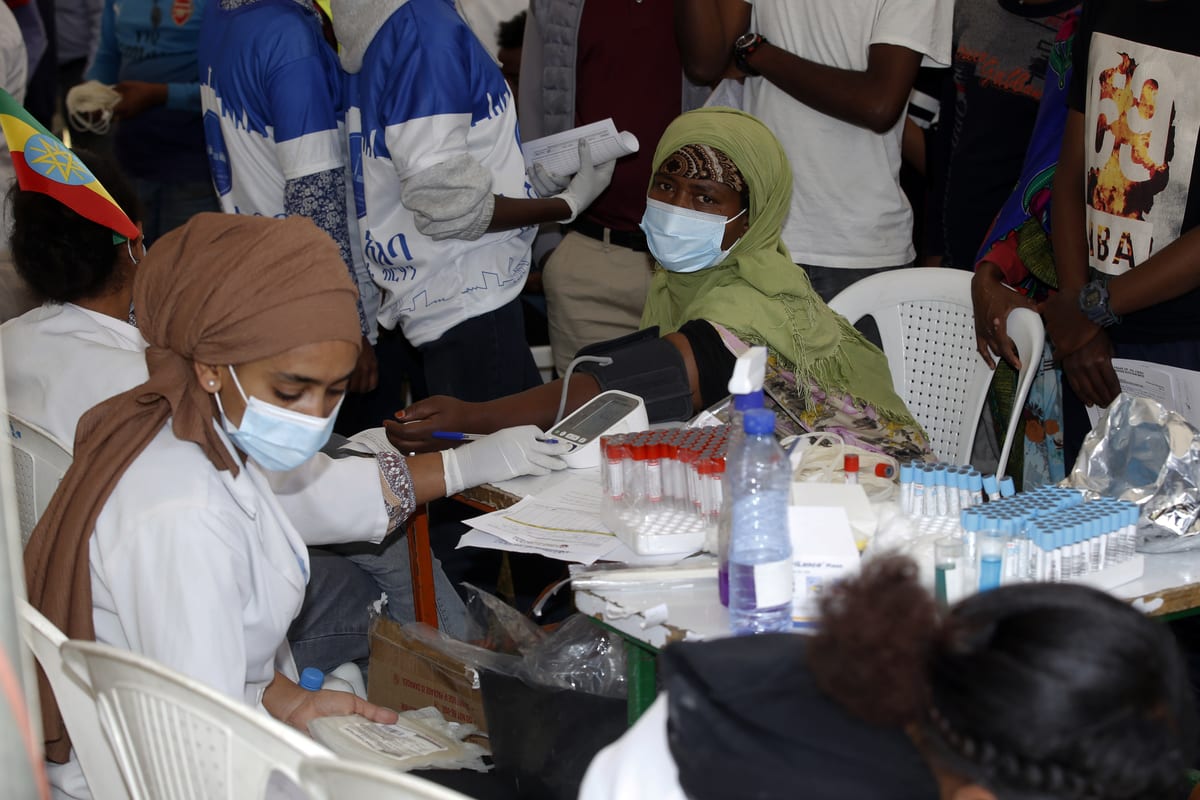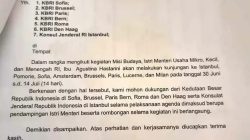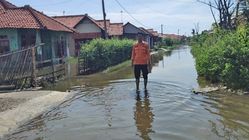An executive order to limit China’s market penetration and boost the US’ capacity in drones might be too little, too late
US President Donald Trump issues quite a few executive orders. So many, in fact, that one could be forgiven for not keeping up with them all.
But amid the rapid-fire policy changes that have come to characterise his administration, one arrived last month that could have drastic implications for the world’s drone market – and China’s role in it.
The order, signed June 6,
requires government agencies
to prioritise using home-grown unmanned aircraft systems (UAS) “to the maximum extent permitted by law”, and pledges to slash regulations to speed up domestic production and development.
Do you have questions about the biggest topics and trends from around the world? Get the answers with
SCMP Knowledge
, our new platform of curated content with explainers, FAQs, analyses and infographics brought to you by our award-winning team.
While this is not the first time Trump and others in Washington have attempted to halt China’s rise in the lucrative field – Beijing’s firms remain world leaders in the industry – it shows the US has not given up the fight.
However, analysts and industry insiders alike said China’s pre-eminent place in the global drone market has made it hard for the US to remove its products from supply chains, at least for now.
Paul Nielsen, managing director at Proxim – a Pennsylvania-based firm which uses drones for commercial inspections – said he sees the executive order as a negotiation tactic, but bristles at the “unnerving” prospect of its implementation.
“There are only half a dozen non-Chinese companies in the world that make drones. My guess is the ban will raise costs,” he said during last week’s Paris Air Show. “It’s basic economics.”
Proxim purchases drones and modifies them for use in a variety of inspections. Its parent company, Near Earth Automomy, specialises in aircraft automation and the drone-powered evaluation of military planes. The firms are trying to break into commercial markets, which could be stymied by a ban or other restrictions.
Trump’s predecessor Joe Biden instructed the Federal Acquisition Security Council to draft a “Covered Foreign Entity List” of companies viewed as posing a risk to US security.
The action came as part of the American Security Drone Act, passed in 2023, which bars federal agencies from procuring drones manufactured by companies on the list, or those made with parts supplied by named companies.
Operations of UAS by companies on the list are also banned, and this prohibition is applicable to all government entities and contractors.
Trump’s executive order instructs the council to “protect the integrity of America’s drone supply chain” by coming up with the list within 30 days of its issuance, and authorises the Secretary of Commerce to “secure the United States drone supply chain against foreign control or exploitation” via the drafting of rules and investigations.
This is likely to be another regulatory setback for
Chinese drone maker DJI
, though the Shenzhen-based company has maintained its leading position in the drone trade even after earlier restrictions.
According to the Centre for Strategic and International Studies, a Washington-based think tank, the firm has a 90 per cent share in the US commercial market. Demand for drones is expected to only increase in the US, especially in farming, construction, maritime and industrial applications.
Market consultancy firm Nova One Advisor has estimated the commercial segment accounts for 77 per cent of the country’s overall drone market in 2023, with anticipated annual growth of 9.2 per cent at a compound rate through 2033. The logistics sector, it said, would be leading this expansion.
On the consumer side, the market is expected to grow at a 10 per cent compound annual growth rate through 2030, driven by technological advancement in drones as well as “flourishing incomes”, as forecast by California-based Grand View Research. This segment was valued at US$1.48 billion in 2023.
Wang Yiwei, an ex-diplomat and head of Renmin University’s Institute of International Affairs in Beijing, said that while Trump intends to relocate the drone supply chain to the US, he is effectively targeting China given the strength of the country’s enterprises.
The US might “imagine” Beijing will use Chinese-made drones to compromise the security of the US, as the technology has played a role in the Ukraine war and the recent Israeli-Iran conflict, he said.
“The US cannot achieve China’s productivity in a short time,” Wang said.
“[If Chinese drones are banned], the US might need to rely on smuggling or other ways to obtain drones and parts, which in turn will have consumers paying a higher price.”
Ke Zong-yuan, an industry analyst with Market Intelligence & Consulting Institute in Taipei, said a full US ban on Chinese drones would only be “a matter of time”, but firms from other countries could not provide the cost-effectiveness of a company like DJI.
“Looking at current trends, no player appears poised to significantly threaten DJI’s leadership in the short term,” he said.
“Given its strengths in product reliability, ecosystem integration and a comprehensive product line, companies like Skydio and Parrot still need time and innovation to breach DJI’s well-established moat,” Ke added, referring to two major Western drone makers, respectively based in the US and France.
Trump’s executive order did not come as a surprise.
Washington’s concerns
over China’s presence in the drone market began to take shape in 2017, when the US Army banned DJI units after an internal analysis flagged security vulnerabilities.
DJI, as well as Autel Robotics, is facing a national security review from Washington as stipulated by the 2025 Defense Authorisation Act.
The two Chinese drone makers will be barred from selling new models if the review is not completed by December 23, a year after the bill was signed into law.
But despite these restrictions, not even Washington’s top law enforcement organ has been able to fully rid itself of Chinese technology. In 2022, US officials confirmed in a Senate hearing that the Federal Bureau of Investigation was one of several arms of government using DJI drones.
While pledging to shift away from overseas technologies, Brad Wiegmann, then a deputy assistant attorney general, admitted it would be difficult as “they kind of dominate the market”.
This superiority extends
throughout the supply chain
. Even drone companies outside China rely on Beijing’s firms to provide several parts they cannot get anywhere else, according to market research firm Drone Industry Insights.
“We have many Chinese partners that send us parts. For instance, most of our batteries come from China,” said Donald Djobo, vice-president for Europe and Africa at the Pennsylvania-based drone manufacturer Aerostar Dynamics.
“Nobody can do without another in this world. It doesn’t mean that American tech is not good. No one can do business alone and be sustainable.”
Chinese drone makers have moved some of their production to third countries such as Malaysia to bypass US restrictions, according to Ke with the Market Intelligence & Consulting Institute.
Beau Vanburen, marketing coordinator for Zephyr Drone Simulator, a Virginia-based company that develops training programmes for practical drones, said most of his customers from police or other public safety departments were using DJI’s drones.
He added that no American companies could make drones at a volume comparable to DJI, and some products advertised as US-made were actually manufactured by Chinese firms.
“If DJI were banned, it would be problematic for any public safety agencies in the US.”
Confrontations over autonomous aircraft are just one aspect of the all-encompassing rivalry between the world’s two largest economies.
After Trump rolled out a sweeping package of “reciprocal tariffs” on nearly every US trade partner in April, Beijing and Washington levied new import duties
in rapid succession
, sending effective rates into the triple digits.
The conflict cooled in May, when talks in Geneva, Switzerland, ended with both countries scaling back most of their tariffs. Further negotiations in London last month saw the two countries agree “in principle” to a framework intended to resolve the upheaval, though prospects of a full-scale drawdown are dim.
Along similar lines, the US has taken several steps to limit China’s access to advanced artificial intelligence chips. In May, the Commerce Department said in a statement that any companies using the Ascend series of chips from Huawei Technologies could be violating US export controls and be subject to enforcement action.
Beijing hit back soon after, vowing to use its anti-foreign sanction laws to hold individuals and entities accountable if they were found to be enforcing or assisting the implementation of the US ban.
More Articles from SCMP
Could hi-tech China revive the US rust belt – and steady superpower ties?
‘A huge achievement’: Hong Kong fans gather to cheer heroes to 2027 Rugby World Cup
Zac Purton blasts past last season’s tally with another magnificent Sha Tin four-timer
Ellis Wong continues barnstorming finish to the season: ‘I love this horse’
This article originally appeared on the South China Morning Post (www.scmp.com), the leading news media reporting on China and Asia.
Copyright (c) 2025. South China Morning Post Publishers Ltd. All rights reserved.





